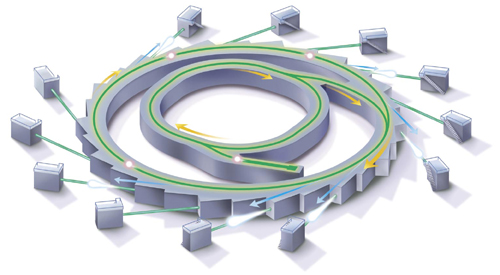A synchrotron is a large machine (about the size of a football field) that accelerates electrons to almost the speed of light. As the electrons are deflected through magnetic fields they create extremely bright light.
The light is channelled down beamlines to experimental workstations where it is used for research.

Illustration of the Australian Synchrotron
To download the Australian Synchrotron Light Source fact sheet, click here (pdf, 800kb)
Synchrotron applications
Synchrotron light is advancing research and development in fields as diverse as:
-
biosciences (macromolecular/protein crystallography and cell biology)
-
medical research (microbiology, disease mechanisms, high resolution imaging and cancer radiation therapy)
-
environmental sciences (toxicology, atmospheric research, clean combustion and cleaner industrial production technologies)
-
agriculture (plant genomics, soil studies, animal and plant imaging)
-
minerals exploration (rapid analysis of drill core samples, comprehensive characterisation of ores for ease of mineral processing)
-
advanced materials (nanostructured materials, intelligent polymers, ceramics, light metals and alloys, electronic and magnetic materials)
-
engineering (imaging of industrial processes in real time, high resolution imaging of cracks and defects in structures, the operation of catalysts in large chemical engineering processes)
-
forensics (identification of suspects from extremely small and dilute samples).
